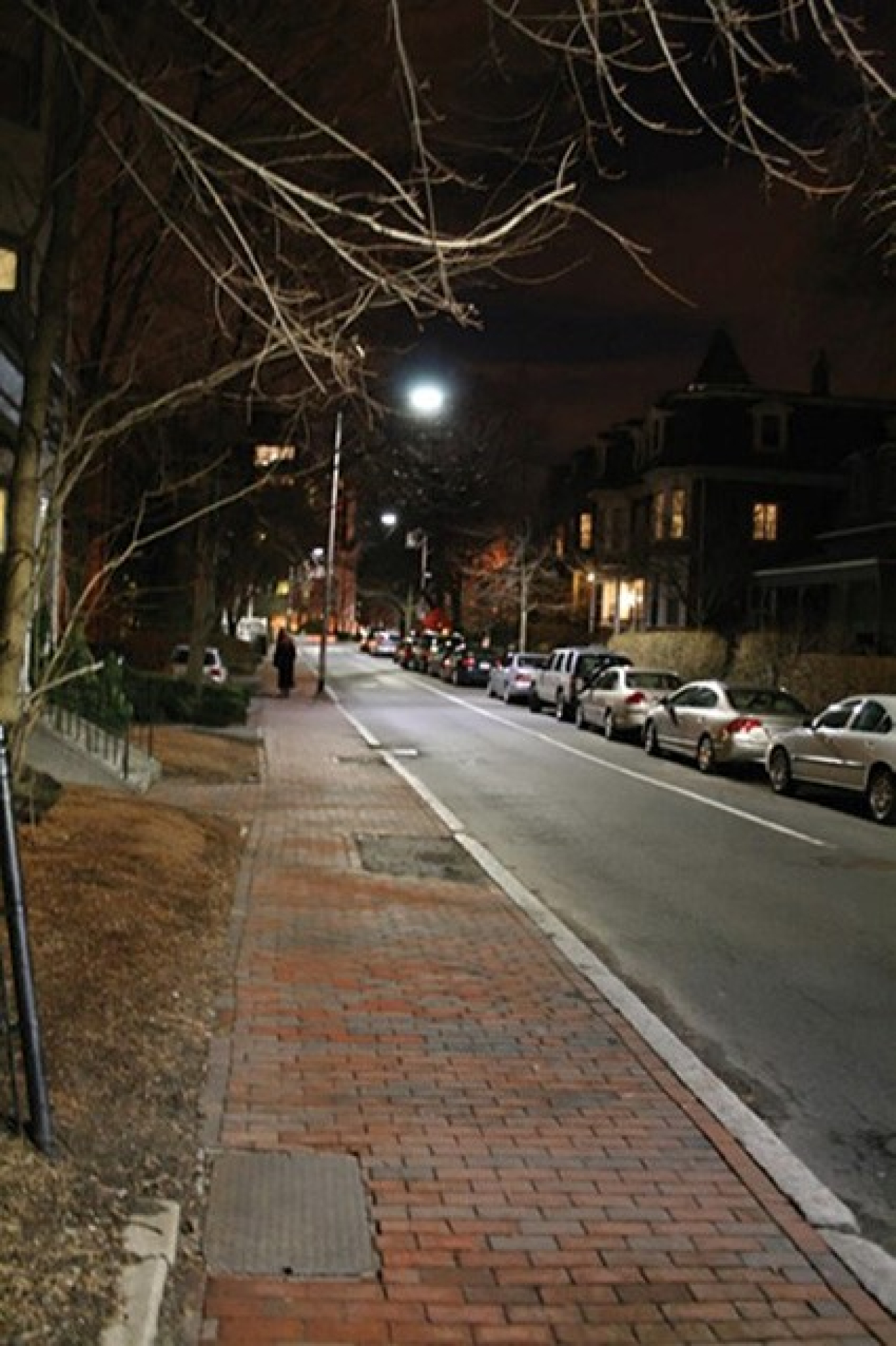
Cambridge, Massachusetts, is among the cities in VTTI's study of the effects of adaptive roadway lighting on users and the community.
Adaptive outdoor solid-state lighting (SSL) systems that feature instant-on and dimming capabilities can potentially reduce energy consumption by more than 50% while also limiting negative effects associated with outdoor lighting, such as light trespass and skyglow. However, the implementation of these systems in street and residential areas has been slow, due in part to the high cost of luminaire controllers and also perceived potential for negative effects on traffic safety and residential security.
A project under way at the Virginia Tech Transportation Institute could prove a game changer for adaptive lighting and have significant and immediate impacts on the outdoor lighting industry. The project involves analysis of the impacts of adaptive lighting and seeks to develop metrics to guide the design of adaptive systems that maximize energy savings through better understanding of application needs, such as visibility, safety, comfort, and security. To begin, the research team analyzed the effect of light levels on crash and crime incidents in cities with and without adaptive lighting. Quantifying the effect of light levels on incidents will lead to better understanding of the safety impact of light levels over longer time periods. The research team also conducted interviews with stakeholder groups including lighting designers, practitioners, and local government employees in cities that implemented adaptive lighting to determine the barriers to implementation and lessons learned that could be compiled into a blueprint that interested cities and towns could follow in implementing adaptive lighting.
The results to date are being used to inform an evaluation of light levels on perceptions of safety, comfort, and visibility on the Virginia Smart Roads. In this evaluation, five light levels (including two from the crash data analysis) will be tested under three different color temperatures of light (2000 K, 3000 K, and 4000 K LED) to determine the light level at which perceptions of safety, comfort, and visibility plateau. This analysis will help determine the target metrics for light levels that will reduce the energy impacts while maintaining safety, comfort, and visibility for all road users.
The final findings will be translated into guidelines and specifications for the application of adaptive lighting in street and residential areas, enabling agencies and governments to make informed decisions about adaptive lighting systems and provide benefit-cost justifications for those systems. (September 2021)
Return to Research Highlights.

